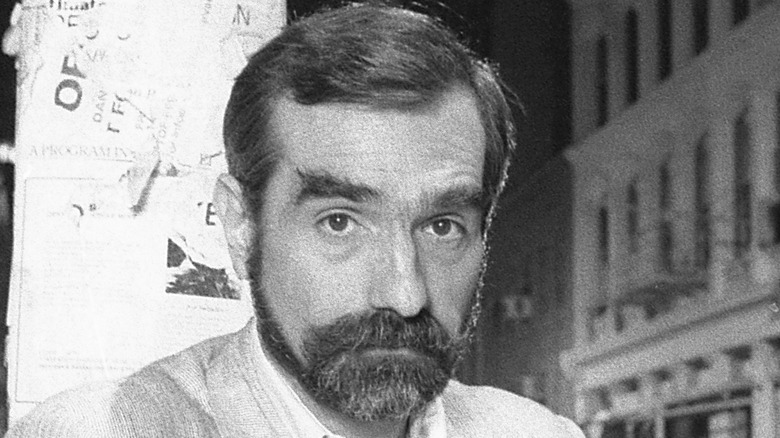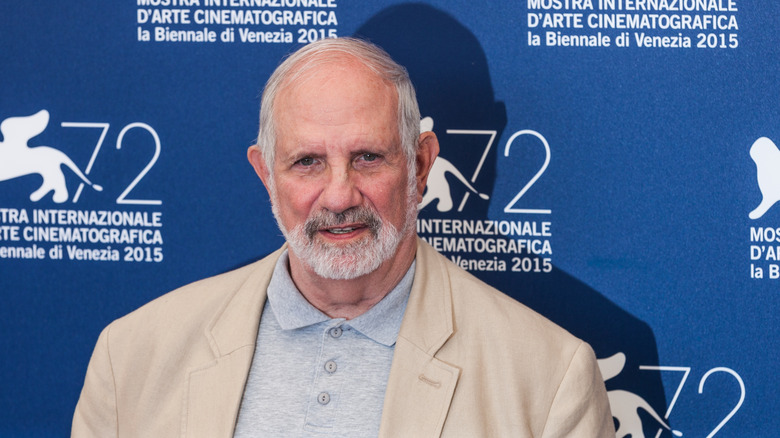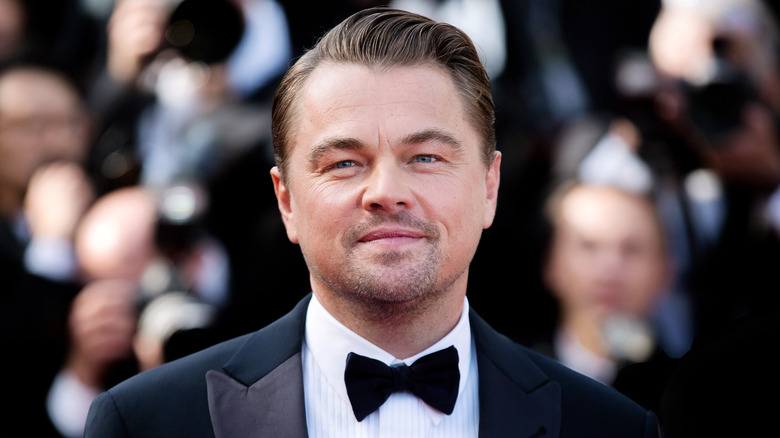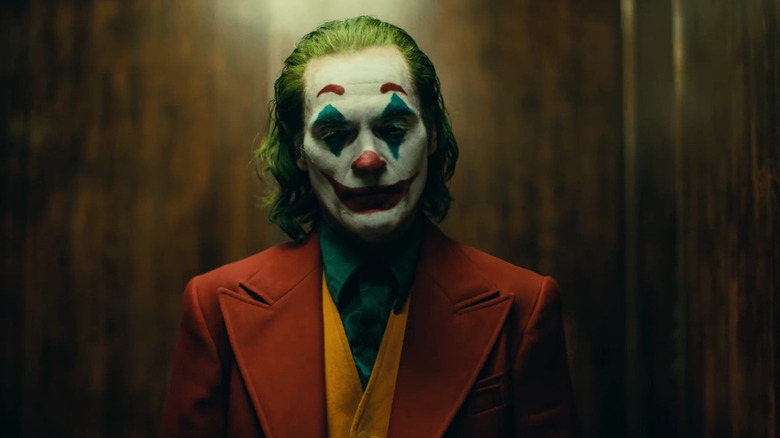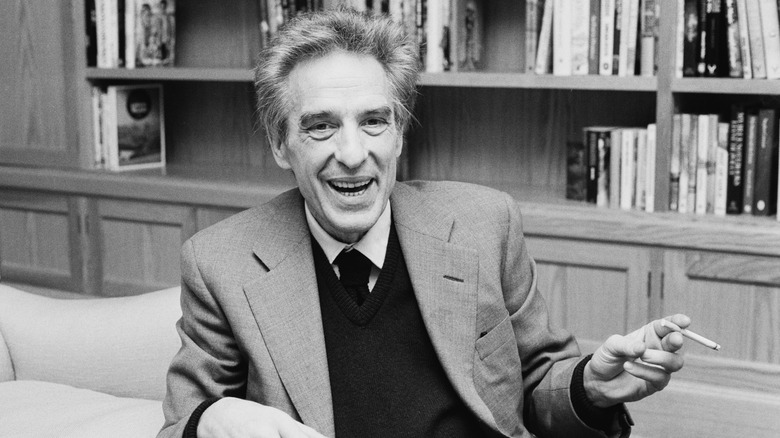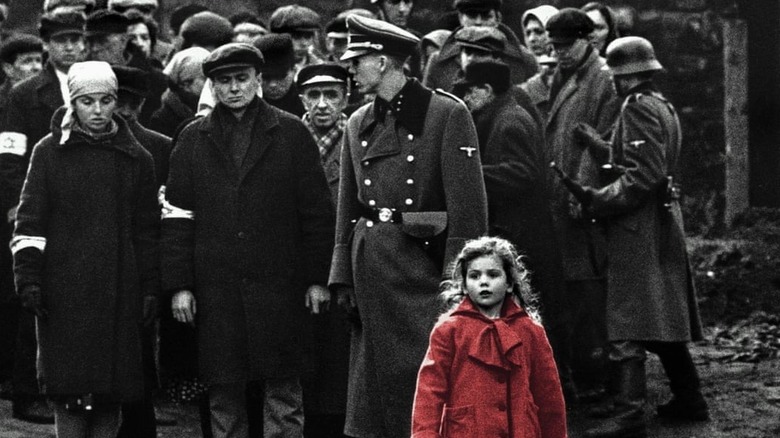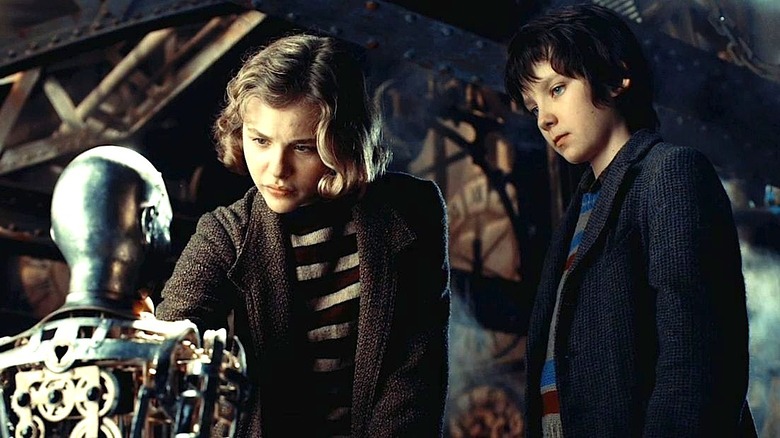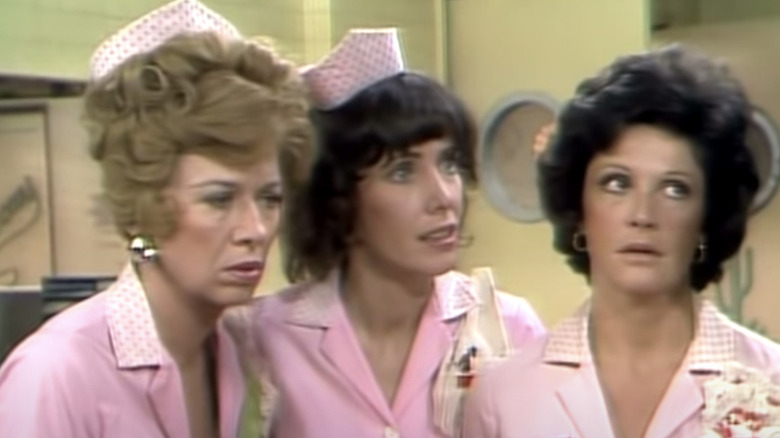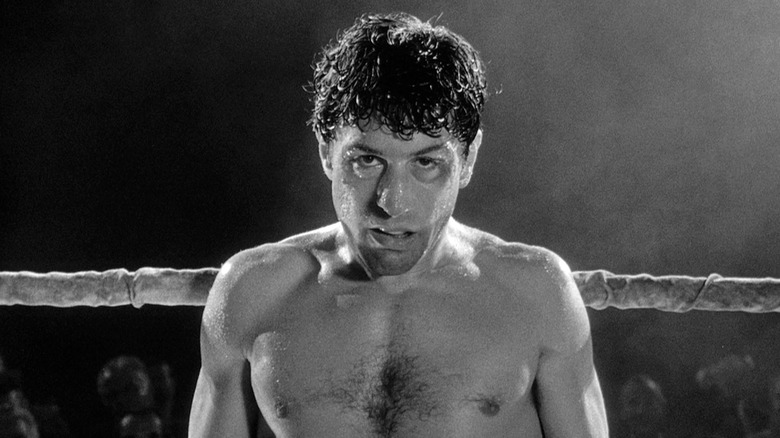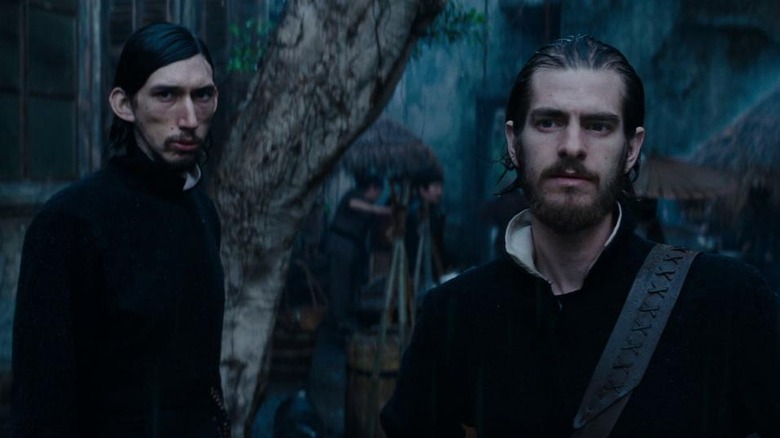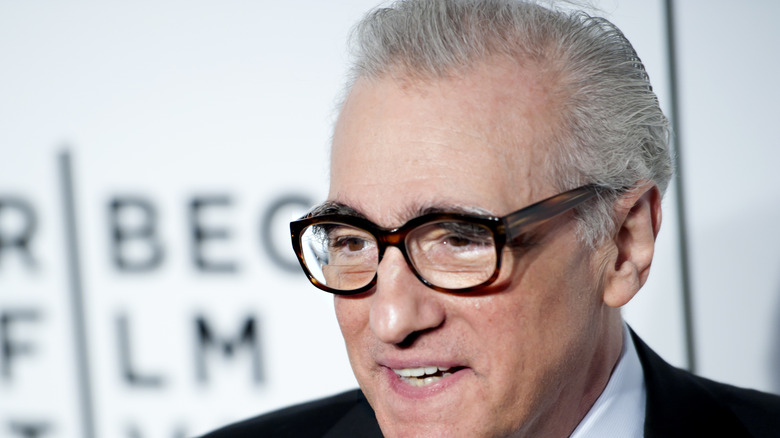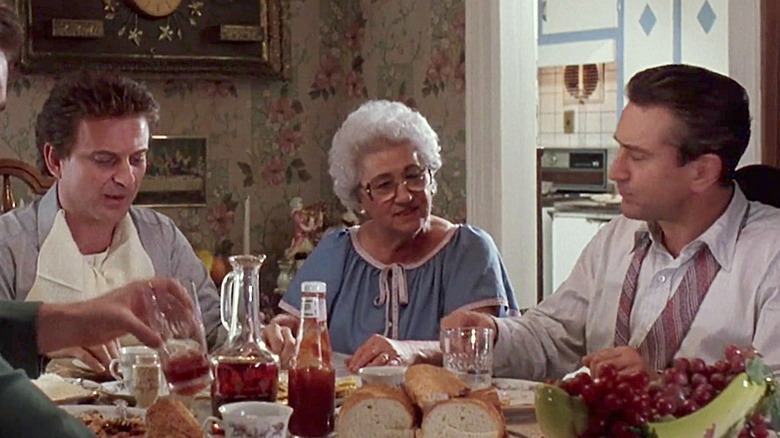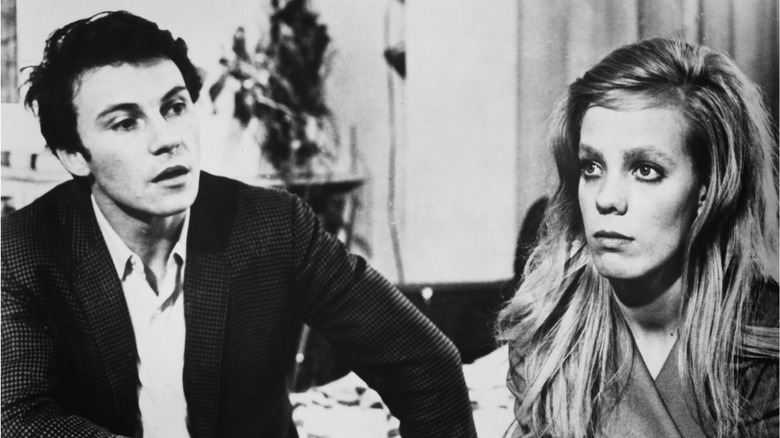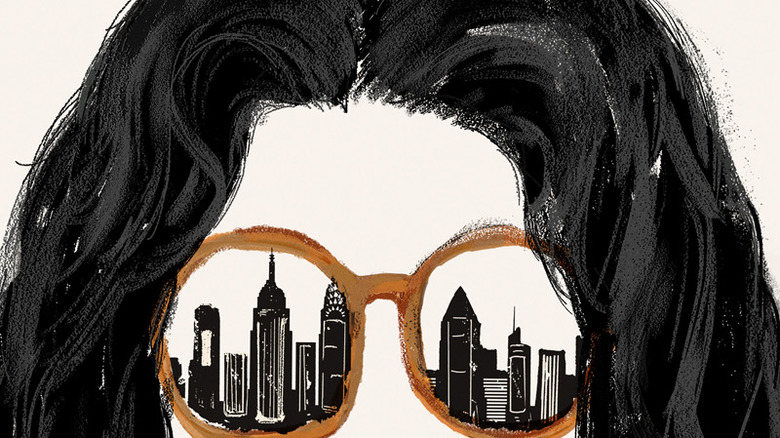The Untold Truth Of Martin Scorsese
We may receive a commission on purchases made from links.
When Steven Spielberg, Francis Ford Coppola, and George Lucas were revealed to be the presenters for Best Director at the 2007 Academy Awards, it seemed like a foregone conclusion that Martin Scorsese would finally win an Oscar for "The Departed." After all, these were his personal friends and peers who, like him, started making great films in the 1970s — but unlike Spielberg and Coppola, Scorsese had yet to receive the elusive trophy.
Of course, Scorsese did win, even if it's regarded as one of the Academy's notorious "Sorry for not giving this to you earlier" awards. Nevertheless, "Departed" was a consensus masterpiece, so it's hard to argue that he didn't deserve it. With that in mind — and if only to remember all the Scorsese masterpieces that somehow did not win Oscars, let's take a look at some things you might not know about one of the most critically acclaimed filmmakers in the history if cinema.
Brian De Palma introduced him to Robert De Niro
Martin Scorsese may be known for his collaborations with Robert De Niro, including "Goodfellas" and "The Irishman," but he wasn't the one who discovered him. That distinction goes to his friend Brian De Palma, who directed De Niro in 1968's "Greetings" (about a man trying to avoid being drafted into the Vietnam War) and its 1970 sequel "Hi, Mom!" (where, after he returns from Vietnam, he tries to film his new neighbors having sex).
After De Palma introduced them, De Niro would go on to star in Scorsese's "Mean Streets," their first of nine collaborations together. De Palma wound up giving Paul Schrader's "Taxi Driver" script to Scorsese as well, leading to one of their greatest efforts together. In 2016, De Palma said he wasn't sure if a Quentin Tarantino-fueled rumor about a drunken Scorsese plotting to shoot a studio head who wanted to cut the violence in "Taxi Driver" was true — but Spielberg says it kinda is. Regardless, it's clear that the "Scarface" director and friend who wasn't on stage to give Scorsese his Oscar was nevertheless instrumental in his success.
Martin Scorsese has a trusting relationship with Leonardo DiCaprio
While De Niro may be Scorsese's most frequent collaborator, he's also become known for his five collaborations with Leonardo DiCaprio in more recent times.
Both De Niro and DiCaprio are set to work together for the first time in Scorsese's upcoming "Killers of the Flower Moon." Of course, Scorsese's frequent partnerships with DiCaprio helped him transition from "Titanic" heartthrob to acclaimed actor status in films like 2002's "Gangs of New York" and 2004's "The Aviator," and DiCaprio would wind up giving perhaps his best performance in "The Wolf of Wall Street."
"Leo has given me a few projects, I've given him a few projects and, again, with Leo, there's that trust," Scorsese told The Hollywood Reporter in 2013. "This stroke of trust is not something where you say, 'Okay, I trust you,' and you go. It's every day — we work at that every day." It's a symbiotic relationship, as DiCaprio has introduced Scorsese to a younger generation that may have not been familiar with Scorsese's older masterpieces like "Mean Streets" and Raging Bull."
Martin Scorsese almost produced Joker
The 2019 film "Joker" is one of the most successful comic book films ever made, and its Scorsese-esque aesthetic was instrumental in its appeal. Although the filmmaker has no credited connection, he was approached to produce by writer/director Todd Phillips — a huge fan who had 1982's "King of Comedy" in mind as he developed the project and even cast De Niro as a talk show host in reference to his performance in that film as a loser who wanted his own TV show.
Like in "King of Comedy," Arthur Fleck of "Joker" is a failed stand-up comedian who dreams of being on a late night talk show, and like "Taxi Driver," he's a loner who wants romance and goes on to commit acts of violence. Scorsese could have helped with Todd Phillip's homage, but ultimately had to drop out.
"I thought about it a lot over the last four years and decided I did not have the time for it," Scorsese explained in a 2019 interview with the BBC. "It was personal reasons why I didn't get involved. But I know the script very well. It has a real energy and Joaquin. You have remarkable work."
After making a flop, John Cassavetes inspired Martin Scorsese to make one of his best films
While known for making personal films, Scorsese has occasionally had to make movies for someone else. One of those times was when producer Roger Corman hired him to make "Boxcar Bertha," a cheap knockoff of "Bonnie and Clyde."
Not considered one of Scorsese's best films, it led to a stinging rebuke from notoriously brilliant-but-cranky indie legend John Cassavetes ("A Woman Under the Influence," "Faces") who told him after seeing a rough cut: "Marty, you've just spent a whole year of your life making a piece of s**t. It's a good picture, but you're better than the kind of people who make this kind of movie."
Scorsese knew that he had to make a film for himself after that, and went on to make his first gangster film (and masterpiece) "Mean Streets." Corman offered to help Scorsese with "Mean Streets" if he were to turn it into a Blaxploitation film, but Cassavetes' words must have stuck with Scorsese enough for him to turn that offer down.
He was originally supposed to direct Schindler's List
While "Schindler's List" was the film that earned Steven Spielberg his first Academy Award for Best Director a decade before Scorsese, it wasn't his original plan to make it. While he knew it was an important story that had to be told, Spielberg felt that he wasn't mature enough in the 1980s when he was making films about Indiana Jones blasting Nazis, so he tried to give it to directors like Roman Polanski, Billy Wilder and Brian De Palma.
After a few years in development, he finally got Scorsese to accept. However, Spielberg came to regret this once he finally felt ready enough to tackle the subject matter himself. At the time, Spielberg was supposed to direct a remake of the 1962 film "Cape Fear," so he convinced Scorsese to swap. "Cape Fear" might not have gotten Scorsese his long sought after Oscar, but it was one of his most financially successful films, and earned Robert De Niro and Juliette Lewis Academy Award nominations.
Scorsese made Hugo so his daughter could watch one of his films
While most people think of gangster movies when they consider Scorsese's oeuvre, he's only made six of them, and is currently in his sixth decade of making movies. But even though he's worked in more genres than you think, it's still fair to say that his films typically aren't for kids.
It was a surprise, then, when "Hugo" was released as his first family film (not counting his voice performance in 2004's "Shark Tale").
"It's a different way of living entirely," he told the The Hollywood Reporter in 2011, saying he never could have made the film if he wasn't a father. "But the thing about it is then [making "Hugo"] seemed natural. It didn't seem like a stretch. Being around children, I'm very comfortable with them now."
It certainly wasn't a director-for-hire gig, as the film about film preservation very clearly reflects Scorsese's passion for the medium. The 3D movie, based on the children's book by Brian Selznick, was an ode to the magic of theatergoing. Ironically, it feels like the sort of film that could only be made today if a streaming company produced it.
He made the film that inspired the hit sitcom Alice
Whenever critics of Martin Scorsese say that his films don't have great female characters, his defenders will usually point to "Alice Doesn't Live Here Anymore" as a counterpoint.
That 1974 film centered on a widow trying to find a better life for herself and her son, and it earned Ellen Burstyn an Academy Award for Best Actress and Diane Ladd a nomination for Best Supporting Actress. It also inspired the beloved 1976-1985 sitcom "Alice," which grew out of a small portion of the film set at Mel's Diner — which became the main setting for the sitcom with Vic Tayback reprising his role as Mel on the show.
Interestingly enough, Ladd would eventually join the cast of "Alice" as a different character from the one she played in the film, appearing for one season. Although the show had less and less to do with its source material as its seasons rolled out, it is fascinating that the great Martin Scorsese inspired a TV sitcom.
He didn't want to make Raging Bull but changed his mind after nearly dying
Scorsese may have made one of the greatest boxing films of all time with "Raging Bull," but he wasn't a big fan of the sport.
"It was always one angle on TV or in the movie theaters, where they'd show the fights on the weekend. I didn't know what the hell was going on," he told Vanity Fair in 2010, reasoning that as a youngster, sports were too staid in their presentation for him. "It was sports, which took me out of the picture."
Turning the story of Jake LaMotta into a film was Robert De Niro's passion project, but he wasn't able to convince his director friend it was worth doing. Scorsese reconsidered, however, after he had a brush with death due in part to a cocaine addiction. "I couldn't understand Bob's obsession with it, until, finally, I went through that rough period of my own. I came out the other side and woke up one day alive ... still breathing."
While not enamored with the subject matter, Scorsese was eventually able to see enough of his personal demons through the lens of LaMotta, especially after his "Taxi Driver" collaborator Paul Schrader was brought in to rewrite the screenplay. Unlike those old boxing matches that he used to watch, Scorsese would switch up angles frequently — and in the process, film some of the most stunning fight scenes ever committed to film.
It took him 28 years to make Silence
Martin Scorsese's 1988 film "The Last Temptation of Christ" was highly controversial for its sequence where Jesus Christ imagines a life where he doesn't sacrifice himself and instead settles down with Mary Magdalene. That divisive reception made him want to do "Silence," based on a novel about Christians persecuted in 17th Century Japan. But he struggled with his ambitions, confessing to USA Today in 2016: "I didn't know how to visualize or structure the story."
Through the years, he kept putting it off and making other films until the Italian distributer Cecchi Gori Pictures sued him in 2012 for breach of contract and Scorsese finally decided that "Silence" would have to be his next film. The delays meant that Andrew Garfield and Adam Driver replaced original actors Benicio Del Toro and Gael Garcia Bernal (who probably would have been more representation-minded choices to play Portuguese priests) and Liam Neeson replaced Daniel Day-Lewis.
Through the hiccups, Scorsese was finally able to get it done. "It's amazing that with all the things against the film that it got made and it's going to be shown," he told USA Today. "There was a lot of sacrifice, a lot of problems, a lot of delays. But this is where I felt I should spend my time."
Martin Scorsese learned how to make films by watching a lot of them
Scorsese is well known for being a visual storyteller and taking full advantage of a medium where skilled directors can convey a lot without words. Just as Orson Welles credits the film "Stagecoach" with teaching him how to make a film like "Citizen Kane," Scorsese's greatest education came from viewing a lot of films because he didn't have anything else to do.
"One of the things that steered me in the direction of visual storytelling was the fact that I come from a working-class family [and] I was a sickly child," he recalled while speaking with the Film Foundation in 2006. "I had very severe asthma, and I couldn't play sports, so I was taken to the movie theater and the church ... I was acquiring visual literacy at that time, though I did not understand that it was happening."
Although he would later go to film school to learn the technical aspects of filmmaking, much like Quentin Tarantino, his real film education came via the movies themselves.
His mom improvised her cameo in Goodfellas
It's common knowledge that "Curb Your Enthusiasm" doesn't have traditional scripts, instead giving its actors story situations that they then improvise dialogue around. For Scorsese's classic "Goodfellas," he put his mother in a similar situation for the now-famous scene with gangsters breaking bread alongside one of their mothers while they're trying to cover up a murder.
"There was some violence, and the aftermath of it was they have to stop off at Joe Pesci's house, his mother's house, to pick up a shovel so they can bury the guy," Scorsese explained of the scene while appearing (virtually) at the TCM Film Festival in 2021. "They enter the house around three in the morning, and they're met by Joe Pesci's mother, Tommy's mother, and that's played by my mother. All we told her to do was just welcome her son home; she hasn't seen him in a while."
By not explaining the whole situation to her, her authentic performance was perfect for a scene where her character is left in the dark.
He had to add a sex scene to his first film so that it could get wider distribution
Scorsese's 1967 debut film "Who's That Knocking at My Door" may not be his greatest work, but it showed enough promise for the late critic Roger Ebert to take note.
Ebert would become one of Scorsese's greatest champions over the decades that followed, and went so far as to predict in his original 1969 review, "It is possible that with more experience and maturity Scorsese will direct more polished, finished films — but this work, completed when he was 25, contains a frankness he may have diluted by then."
The commercial prospects for "Knocking," a small art house film about a man uneasy that his girlfriend is not a virgin, despite her even having been raped, were obviously grim. Distributer Joseph Brenner Associates demanded a sex scene be added so that it could be marketed as an exploitation film. Box office figures are hard to find, so it's highly doubtful that one unnecessary scene turned the film into a hit, but at least it was able to actually get released and pave the way for greater things to come.
It took him 10 years to convince Fran Lebowitz to do Pretend It's a City
Thanks to an "SNL" sketch and Netflix, Scorsese's "Pretend of a City" may be his better known collaboration with author Fran Lebowitz. However, they first worked together on the documentary film "Public Speaking," which was made for HBO, but is not available for streaming on HBO Max.
It took a while before they would work together again, as Lebowitz told her reasons for initially turning down a follow up to Deadline in 2021: "If there was any other person that there were two documentaries about, and that person wasn't George Washington, I would be raising my eyebrow." Ultimately, she relented when Scorsese raised the possibility that it could be a television show. "For 10 years, Marty kept saying, 'Let's do this again.' And then at a certain point, he said, 'Let's do it as a series.' And so, finally I said yes." The ode to a pre-pandemic New York has much of Lebowitz's wit and is perfect to watch either in 30 minute bits or one three and a half hour binge.
